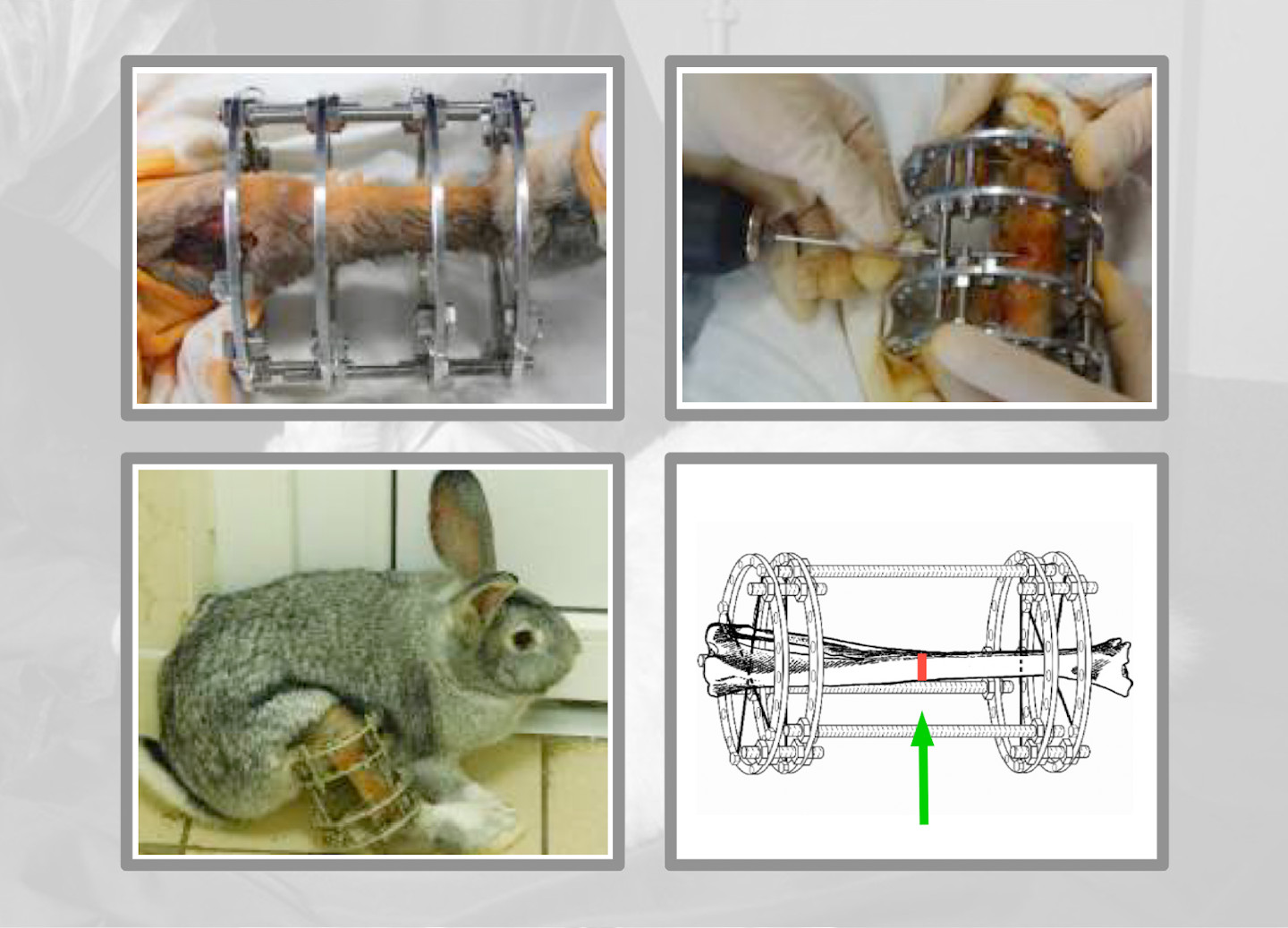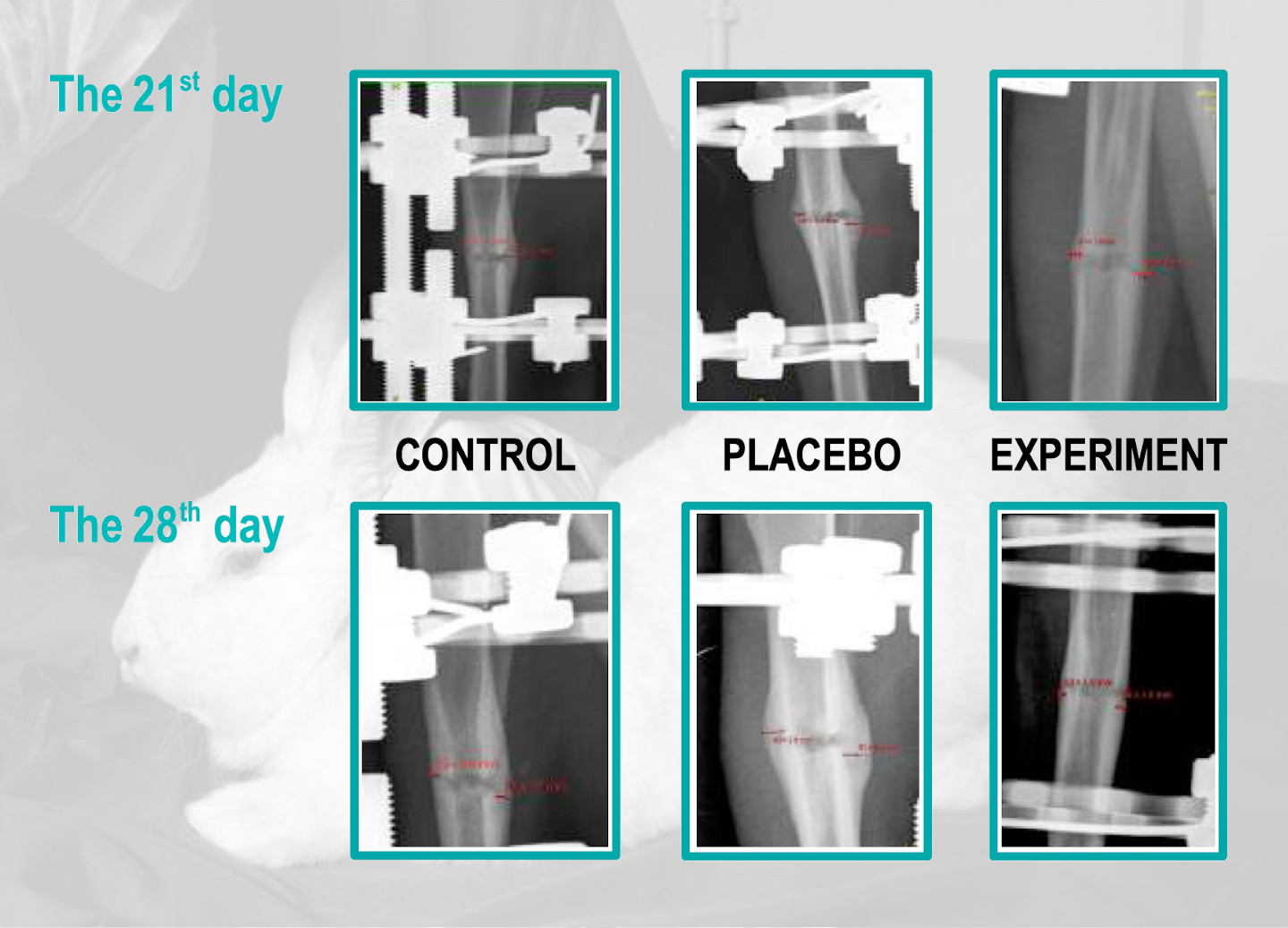The INROST Bone Regeneration Initiator is the culmination of over 15 years of dedicated research and development. The INROST research team faced numerous challenges and conducted extensive preparatory studies before achieving success. This breakthrough represents the power of perseverance and scientific innovation and holds promise for millions of people suffering from bone-related injuries and diseases.
As a result of the first investment cycle, initial preclinical trials and some additional studies have been completed in Russia, the effectiveness of the drug has been confirmed. Additional studies have shown that the drug is not toxic, does not accumulate in the body, does not disrupt the natural physiological stages of healing and is genetically safe.
OVERALL RESEARCH DESIGN
3 Groups
> First control group – "CONTROL"
Fixation in the device,
No medication applied
> Second control group –"PLACEBO"
Fixation in the device,
Saline injection in the fracture area
> Experimental group – "EXPERIMENT"
Fixation in the device,
INROST injection in the fracture area

The research was conducted with meticulous attention to scientific rigor and professional standards. The experimental design was carefully crafted to minimize bias and confounding variables, and the procedures were executed with a high degree of precision and accuracy, ensuring the reliability and validity of the results.
Research
Apart from the pilot preclinical trials in Russia, the following studies were undertaken:
1. Genetic Safety Report - Kazan State University, Department of Microbiology
2. Toxic Safety Report - Federal State Research Institute “Rosmedtechnology”
3. Specific Activity Report - Bauman Kazan State Academy of Veterinary Medicine
4. Assessment of Osteoblastic & Osteoclastic Activity Report - Kazan State Medical University
5. Specific Activity Report - National Medical Research Center of Traumatology & Orthopedics n.a. R.R. Vreden.
EXAPLE OF X-RAY RESEARCH
This study investigated the effect of INROST Bone Regeneration Initiator on bone healing using X-ray imaging. The experimental group showed reduced periosteal callus formation and increased cortical bone formation compared to the control group. Excessive callus formation can lead to complications, while cortical bone provides structural support.

These findings have significant clinical implications and suggest that INROST may have a beneficial effect on bone healing.





